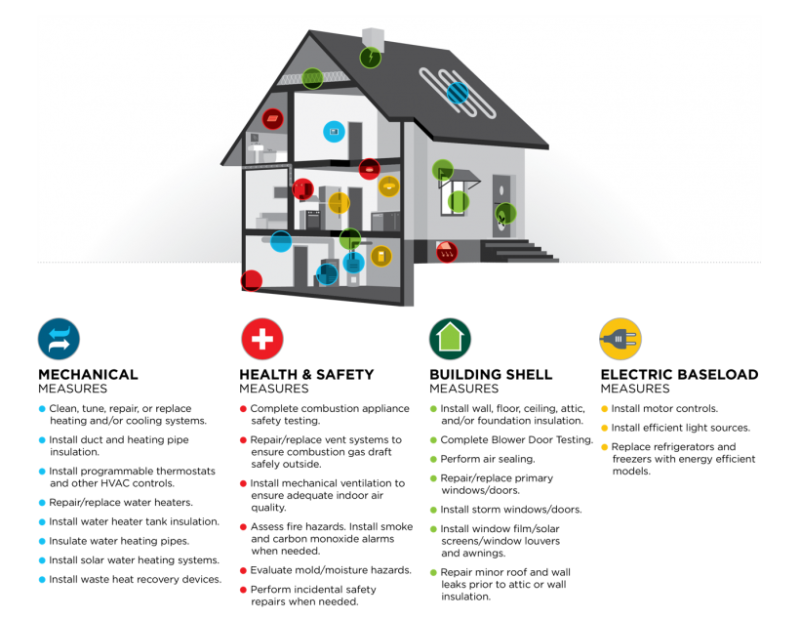Insight into Federal Programs | Just Transition
March 29, 2022
November 14, 2022 | Allie Judge, Associate
The Department of Energy’s Weatherization Assistance Program (WAP) provides technical and financial assistance for energy efficiency upgrades for low-income households, reducing energy costs and improving health and safety. Recently, WAP received a major boost in the Bipartisan Infrastructure Law, which increased funding for the program by $3.5 billion.
WAP was established in 1976 by the Energy Conservation Policy Act at a time when energy prices were exceptionally high. Initial efforts focused on air sealing in homes through insulation and caulking. In recent decades, new building technologies have emerged, and there has been an increased recognition of buildings as an interconnected system of structures, appliances, and occupants.
Low-income households are disproportionately burdened by energy costs. According to the Department of Energy (DOE), low-income households typically spend 13.9% of total annual income on energy, compared to 3% in other households. Homes with weatherization improvements save an average of $372 per year according to a national evaluation of the program (reflecting 2022 dollars). With weatherization improvements, homes also become more livable, resulting in fewer sick days and an average decrease of $514 out-of-pocket medical expenses. The total health and household-related benefits for each household averages $14,148.
Currently, WAP supports an average of 8,500 jobs and provides services to 35,000 homes each year in all 50 states, DC, US territories, and tribal nations.
The types of weatherization measures that are offered vary by state, but some examples are:
The DOE also requires each state program to utilize computerized energy audits specific to the type of home in order to determine the most appropriate and cost-effective measures.

Before you apply to WAP, determine whether you are eligible. Under DOE guidelines, eligible households are at or below 200% of the poverty income guidelines or receive Supplemental Security Income or Aid to Families with Dependent Children. States may also elect to use the Department of Health and Human Services Low-Income Home Energy Assistance Program (LIHEAP) criteria of 60% of state-median income.
Locate your state or territory’s Weatherization Administrator and apply for assistance here. In 2020, the average cost of repairs offered was $7,669 per home.
Other federal programs provide direct support to families who need help with energy bills:
If you are interested in working with WAP, you can contact your state or territory’s office directly.
In collaboration with the private sector, the DOE has developed Guidelines for Home Energy Professionals (GHEP), which provides resources on supporting quality work and a skilled, credentialed workforce for home energy upgrades. You can consult the GHEP for more information on work specifications, accredited training, and professional credentials.
_____
Want to know more about BIL? Explore additional entries to the Breaking Down the Bipartisan Infrastructure Law series to discover programs funded through this $1.2T investment. CEBN’s cleantech funding database includes even more opportunities.